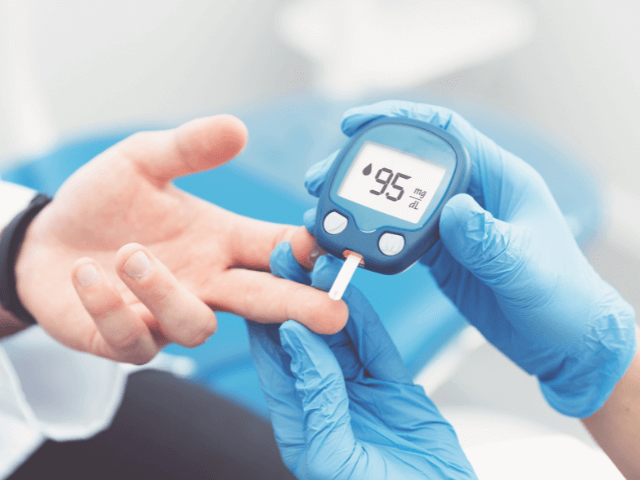
Prediabetes or insulin resistance – a diagnosis characterized by higher-than-normal blood sugar. With prediabetes, the body is struggling to maintain blood sugar levels within a healthy range and has not yet developed into full-blown type 2 diabetes.
I’ve covered what happens in a prediabetic body to cause the condition and possible symptoms of the condition here. I looked at who was most at risk for developing the condition here. In this article, I look at ways to reverse and even prevent prediabetes from occurring, so keep watching!
While there may not be a clear cure for prediabetes, it can certainly be reversed through lifestyle modifications such as following a consistent diet and exercise routine that improves one’s health or via medication.
Incorporating lifestyle changes such as abiding by a balanced diet, following a regular exercise routine, and sustaining a healthy body weight can help maintain blood sugar levels, thereby preventing the chances of developing prediabetes.
Some of the ways to reverse prediabetes include the following:
1. Lifestyle alterations:
Cutting down on foods that are high in processed carbs, saturated fats and refined sugars while adding more whole fruits, vegetables, lean protein, legumes, and whole grains to one’s diet can go a long way in helping to reverse prediabetes or to delay the onset of diabetes. One should avoid snacking between meals, and stick to fixed meal times as it often leads to binge-eating patterns. And stop grazing on food all day, you’re not a cow! While nutrition is vital, exercising portion control is equally important (Understanding Your Macronutrient Requirements)
Along with eating the right foods, maintaining a regular exercise routine can aid in losing excess weight and help build muscle, which, in turn, can lower your blood sugar level, making your body respond better to insulin, burning calories even when you are not physically active. This is a result of having more and better quality muscle overall. They are your body’s largest glucose sink – and their size and health directly impacts how insulin sensitive you are and whether or not you will manifest prediabetes.
2. Treating sleep apnea:
According to a study published in the American Journal of Respiratory and Critical Care Medicine, two weeks of Continuous Positive Airway Pressure (CPAP) treatment for sleep apnea can help improve and stabilize blood sugar levels.
Some of the ways in which the occurrence of prediabetes can be prevented include the following:
1. Regular blood sugar tests:
Upon consulting a doctor, they might recommend one of the following blood tests to track an individual’s blood sugar levels:
a) Fasting Blood Sugar Test
This measures your blood sugar after an overnight fast (not eating). A fasting blood sugar level of 99 mg/dL or lower is normal, 100 to 125 mg/dL indicates you have prediabetes, and 126 mg/dL or higher indicates you have diabetes.
b) Fasting insulin test: The insulin fasting blood test is chiefly used as a test insulin levels and to diagnoses diabetes and insulin resistance. The test can also hypoglycemia, an insulin related disorder. Insulin is a peptide hormone that is produced by the pancreas and is used to control the level of glucose in the blood. Once, your level is between 20-25 – its a signal of prediabetes.
c) Haemoglobin A1c: This test involves checking whether an individual’s blood sugar levels are usually under control. The test shows the average blood sugar for the last 3 months. If the level is between 5.7 and 6.4 per cent, it is a warning sign of prediabetes. Ideally, you want this under 5.4%
2. Eating regular, balanced meals:
Timely, balanced meals without skimping on any essential food group can help one keep their blood sugar and cholesterol levels in check, thereby reducing the risk of developing prediabetes. Moreover, incorporating fibre-rich foods within one’s diet, such as oatmeal, fruits, and leafy vegetables, improves insulin resistance, making one feel fuller for longer while simultaneously improving gut health and weight management. You want to primarily try and exclude high GI foods if you’re prediabetic. One can also consult a nutritionist or a dietician to plan a diet regimen that can be sustainable in the long run. (Understanding Your Macronutrient Requirements/)

3. Exercising regularly:
Incorporating at least 30 minutes of physical exercise five times a week is key to maintaining good health. Apart from setting aside time for a dedicated workout, one should try and get as much movement as possible through the day, including taking the stairs instead of the elevator, walking short distances and refraining from sitting for long hours.
4. Stress management:
Keeping stress levels in check and getting adequate sleep every night reduces the chances of prediabetes. One can also monitor blood pressure levels regularly to keep track of any potential stressors.
5. Fasting:
Intermittent fasting or time-restricted eating (Losing Belly Fat With Intermittent Fasting) is probably one of The most effective ways to preventing, halting and reversing prediabetic conditions. This is because it puts an absolute stop to insulin production, while simultaneously increasing the insulin sensitivity of existing cells, which is what you want to be.


